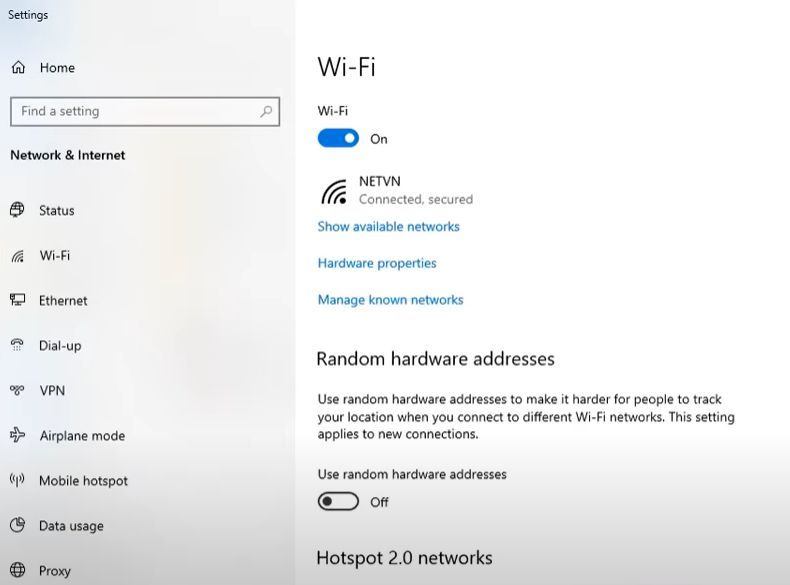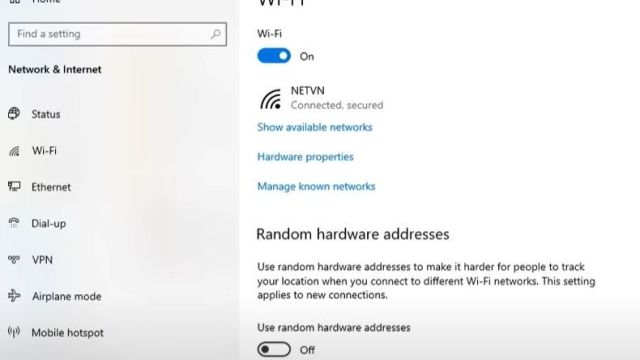Updated: 2023-09-02
The ” network security key” is your wireless network’s way of ensuring secure connection. It’s like bouncer at club, ensurign only the right folks get in. This key is the cornerstone of wireless networks, ensuring unauthorized users don’t gain unwanted access. Dive in with me, dear reader, as we explore the ins and outs of network security keys, their types. And how to find them. Plus, we’ll touch on some common issues folks face, like the pesky “network security key mismatch” error. Ready? Let’s get started!
Table of Contents
- What’s a Network Security Key?
- Why’s it so paramount for wireless networks?
- The prevalent types of Network Security Keys: What are they?
- How to find your network security key?
- What’s a network security key mismatch error? And how to resolve it?
- Why is a robust password paramount for network security?
- The dangers of unauthorized access: What should you know?
- How do mobile hotspots and business networks differ in security needs?
- The role of antivirus software in complementing network security.
- Final Thoughts
What’s a Network Security Key?
Ladies and gentlemen, think of network security key as your wi-fi password. It’s that combination of letters and characters you enter to connect your devices to wireless networks. Its main job? Preventing unauthorized access. You wouldn’t want just anyone hopping onto your personal network, right? That’s where this key steps in, enusring only those with correct password get in.
Now, you might be wondering, “Why not just call it a wi-fi password?” Well, friend, while they’re often used interchangeably, the network security key is bit more technical. It’s the digital signatuer that your dear device and router exchange to establish a secure connection. So, while “wi-fi password” is what most of us casually use, “network security key” is the formal term.
Why’s it so paramount for wireless networks?
Imagine online banking or shopping without secure connection. Scary, right? That’s where the network security key comes in. It ensrues that your internet connection is safe from unauthorized users. Without it, anyone could hop onto your network, potentially accessing your dear personal data.
But it’s not just about keeping out unwanted guests. A secure network also ensures a stable connection. Ever been in middle of a crucial online meeting and suddenly lost connection? A strong network securtiy key can aid prevent such mishaps. It’s like the foundation of a house – the stronger it is, the safer you are.
The prevalent types of Network Security Keys: What are they?
WEP
Ah, WEP. It’s like the granddaddy of security protocols. Introduced way back, it was the first attempt to secure wireless networks. But here’s the thing, dear reader: it’s outdated. While it uses a 40-bit key, it’s not the most secure option out there. Hackesr found ways around it, making it less reliable. Well, if you’re still on WEP, it might be time for an upgrade.
WPA
Enter WPA, the successor to WEP. It brought along some extra layers of security, making its harder for unauthorzied users to break in. But, like all things, it had its flaws. While its was a step up from WEP, it wasn’t the ultimate solution.
WPA2
Now we’re talking! WPA2 took what WPA started and made its even better. With stronger encryption and better sceurity protocols, it became the go-to for most wireless networks. If your device supports it, this is one you want.
WPA3
The latest and greatest, WPA3 is brand new kid on block. It promises even tigther security and protection against common types of attacks. While not all devices support it yet, it’s the future of wireless network security.
How to find your network security key?
On a router
Alright, friends, let’ s start with the basics. Your router. That box with blinking lights? It’s gateway to your wireless network. Most routers have sticker on back or bottom with default network secuirty key. It’s frequently labeled as “Wi-Fi Password” or “WPA Key”. But remember, if you’ve changed it from the default, you’ll need to log into the router’s settings to find it.

On a Windows device
Got a Windows PC? Here’s trick for you. *Depending on the version of Windows you have – you can go to your network settings, find the wierless network icon, and right-click. Select ” Network and Sharing Center”. From there, click on your wi-fi network’s name. A window will pop up. Click on the “Wireless Properties” button, then the “Security” tab. Voila! Your network security key will be right there, though its might be hidden. Just check the “Show characters” box to see it.
On Mac
For our Apple-loving friends, finding the network security key is a breeze. Open “Keychain Access” from your utilities. Find your wi-fi network’s name, double-click, and a window will pop up. Check the “Show Password” box, and you’re golden!
On a smartphone
Mobile phones, tablets, mobile hotspots – they all connect to wi-fi networks. On most smartphones, you can’ t directly view saved wi-fi passwords. But, if you’ve got a rooted Adnroid device, you can dive into the root folder to find it. For others, you might need to check router or ask the network admin.

What’s a network security key mismatch error? And how to resolve it?
Ever tried connecting to wi-fi network and got a “network security key mismatch” error message? Frustrating, right? It’s like your device and router are speaking difefrent languages. This error usually pops up when you enter wrong password. But sometimes, even the correct password can trigger it.
So, how do you fix it? First, double-check password. Ensure you’re entering it correctly. Caps lock on by mistake? That could be the culprit. If you’re sure about the password, try restarting your dear router and device. Sometimes, a easy reboot does trick. If all else fails, you might need to reset your router to its defalut settings. But remember, this means you’ll lose all your custom settings. So, use it as a last resort.
Why is a robust password paramount for network security?
Think of weak passwords as flimsy locks on a treasure chest. Easy to break, right? A strong password, on the other hand, is like fortress. It keeps unauthorized users out, ensuring your dear data stays safe. With the rise of online banking and shopping, a secure network is more crucila than ever.
But what makes password robust? A combination of letters, numbers. And also symbols. Avoid using easily guessable words like “password123” or “admin”. And change its up every so often. Remember, the strongre password, the safer your network.
The dangers of unauthorized access: What should you know?
Unauthorized access is like thief sneaking into your house. They can steal your precious data, misuse your dear internet connection, and even launch attacsk from your network. And the worst part? You might not even know it’s happening.
From online banking details to private photos, a lot is at stake. Unauthorizde users can also slow down your internet connection, making it frustrating to use. Well, always ensure your network is secure. Use a strong password, keep your dear router’s firmware updated, plus be wary of unknown devices connecting to your home network.
How do mobile hotspots and business networks differ in security needs?
Mobile hotspots are like portable wi-fi routers. They’re great for on-the-go internet access. But, they regularly lack the advanced network settings and security features of tradiitonal routers. Business networks, on the other hand, need extra layers of security. With multiple users and sensitive data, they can’t afford breaches.
For mobile hotspots, it’s essential to change default password and limit number of connected devices. Business networks should invest in robust security protocols, regular audits, and employee training. Remember, the more devices and data, the higher security needs.
The role of antivirus software in complementing network security.
Antivirus software is like immune system for your devices. While the network securtiy key keeps intruders out, antivirus software deals with any threats that sneak in. From malware to phishing attacks, it’s got your back.
But here’s thing, dears: antivirus software and network security go hand in hand. One without other is like a car wihtout brakes. Sure, it’ll move. But its won’t be safe. So, always ensure both are up to date and working in harmony.
Final Thoughts
Navigating world of network security can be daunting. But with a bit of knowledge and right tools, you can keep your wireless networks safe and secure. Remember, the network security key is your first line of defense. Keep it robust, change it frequently. Also, always be on the lookout for unatuhorized access. Stay safe out there, my dear friends!
